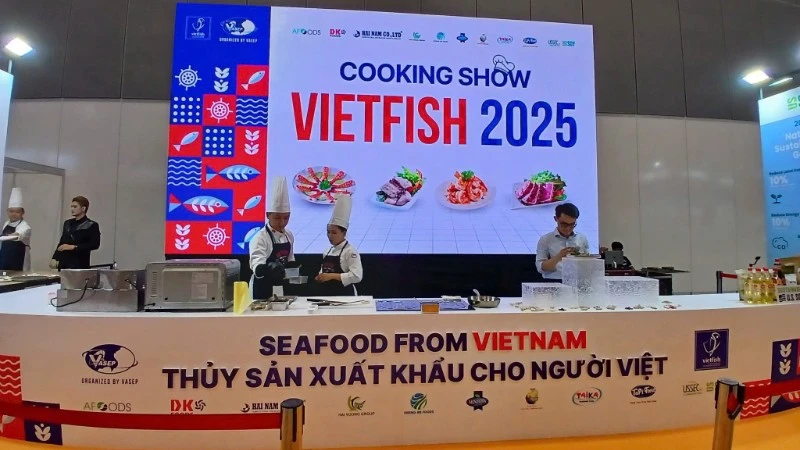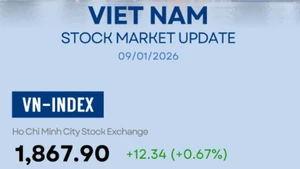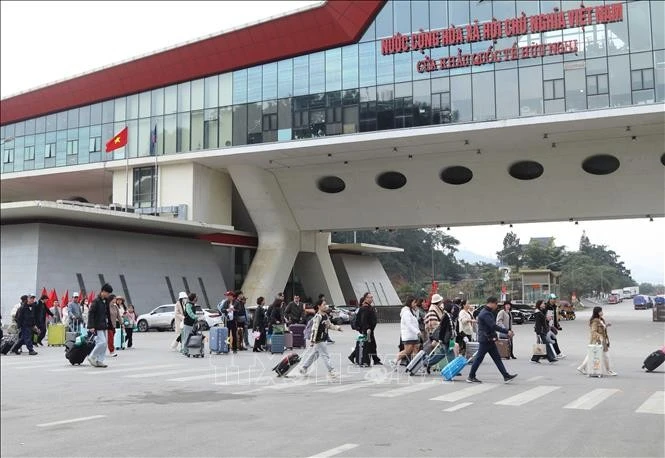At the same time, with a population of over 100 million and a record surge in international visitors, the domestic market has been identified as a new pillar in the industry’s development strategy.
In the first eight months of 2025, seafood exports exceeded 7 billion USD, up more than 11% compared to the same period last year. The final months of the year are considered a “golden” time to accelerate exports, as festivals drive up consumer demand.
Choosing a distinct path
Viet Nam’s seafood exports are facing a range of challenges from global tariff fluctuations and intense price competition from countries such as Indonesia, Ecuador, and India. To respond swiftly to these changes, many Vietnamese enterprises have adjusted their strategies, upgrading their products to enhance competitiveness.
According to Mr. Truong Dinh Hoe, Advisor to the Viet Nam Association of Seafood Exporters and Producers (VASEP), tapping deeper into the value-added processing segment is essential for Vietnamese businesses to maintain their standing in top export markets.
As such, Viet Nam still has the opportunity to retain its role as a strategic supplier in the US market by pursuing a distinct path focused on quality, service, and premium products. Companies have already developed a wide range of deeply processed and organic products targeting the high-end segment. Strengthening traceability, expanding internationally certified farming areas such as ASC and BAP, and minimising antibiotic residues are also critical factors in boosting competitiveness.
Diversifying processed product lines and expanding markets is the strategy being implemented by Sao Ta Foods Joint Stock Company to ensure uninterrupted production amid overlapping challenges.
Ho Quoc Luc, Chairman of Sao Ta’s Board of Directors, said that for the US market, the company exports shrimp products not subject to anti-dumping and countervailing duties. Sao Ta is also focusing on other key markets such as Japan, while actively promoting trade to expand exports to Western Europe, Australia, the Republic of Korea (RoK), and soon China.
The strong recovery of markets in China, ASEAN, and Japan, together with signs of technical barriers being lifted by the European Union (EU), is opening up significant growth potential for Viet Nam’s value-added seafood products.
In addition, Free Trade Agreements (FTAs) with the EU, the UK, and the Comprehensive and Progressive Agreement for Trans-Pacific Partnership (CPTPP) continue to offer significant tariff advantages for the seafood industry.
Seafood exports to the key Chinese market posted impressive growth, reaching more than 1.3 billion USD in the first seven months of 2025 - up nearly 43% compared to the same period in 2024. The resumption of strong imports by the billion-population market, especially for shrimp and squid, has created momentum for Vietnamese enterprises to accelerate exports. This is also the result of businesses’ flexibility in proactively shifting strategies and boosting sales in markets with high growth potential.
The EU market remains an important and promising destination. Despite challenges from IUU (Illegal, Unreported and Unregulated) fishing regulations, EU demand typically surges after the summer holiday season - a “golden time” for trade promotion. Ready-to-eat, protein-rich, and reasonably priced products such as tuna are attracting strong interest in Northern European countries.
Nguyen Ha, a tuna market expert at VASEP, reported that Viet Nam’s tuna exports to Finland in the first seven months of the year reached nearly 2.5 million USD, growing by almost 50% compared to the same period in 2024 - an indication that Finland will remain a highly promising market in the future.
Bringing export products to Vietnamese meals
At the Viet Nam National Exposition Centre (VEC) in Dong Anh, Ha Noi, market expert Phung Kim Thu from VASEP noted that the booth showcasing Viet Nam’s signature seafood export products consistently drew large crowds. Most visitors expressed interest in purchasing products to try them out. This demonstrates growing domestic consumer demand for seafood products that meet export standards.
Exhibition visitor Le Thi Hoan shared that she used to buy shrimp and fish at local markets, but in the past two years has become a loyal supermarket customer, as seafood there is hygienically displayed, quick to prepare, fresh, and highly nutritious. She said she is eager to buy products meeting export standards, but they remain difficult to find as they are not widely available.
For many years, shrimp, pangasius, and tuna have been the “stars” of Viet Nam’s seafood exports, with the US, China, the EU, and Japan as the core markets. However, amid unpredictable global trade fluctuations, channeling high-quality seafood products back into the domestic market is not just a stopgap measure but a long-term strategy—creating a second pillar alongside exports.
With a population of over 100 million and per capita seafood consumption of around 40 kilogrammes per year, Viet Nam is one of the largest seafood-consuming countries in the region. As living standards rise, the demand for high-quality, safe, and traceable food has become increasingly evident. Consumers are willing to pay more for branded products that follow international standards. Deeply processed, value-added seafood products - already popular in export markets - can also easily reach domestic consumers. If leveraged effectively, the domestic market can not only absorb part of production but also serve as a testing ground and springboard for value-enhancement strategies.
Proactively renewing itself and accelerating market diversification is a necessary step for seafood enterprises to reposition their brands. Expanding domestic consumption not only helps consolidate the industry’s foothold at home but also provides a “passport of trust” to strengthen Viet Nam’s global trade value.
















